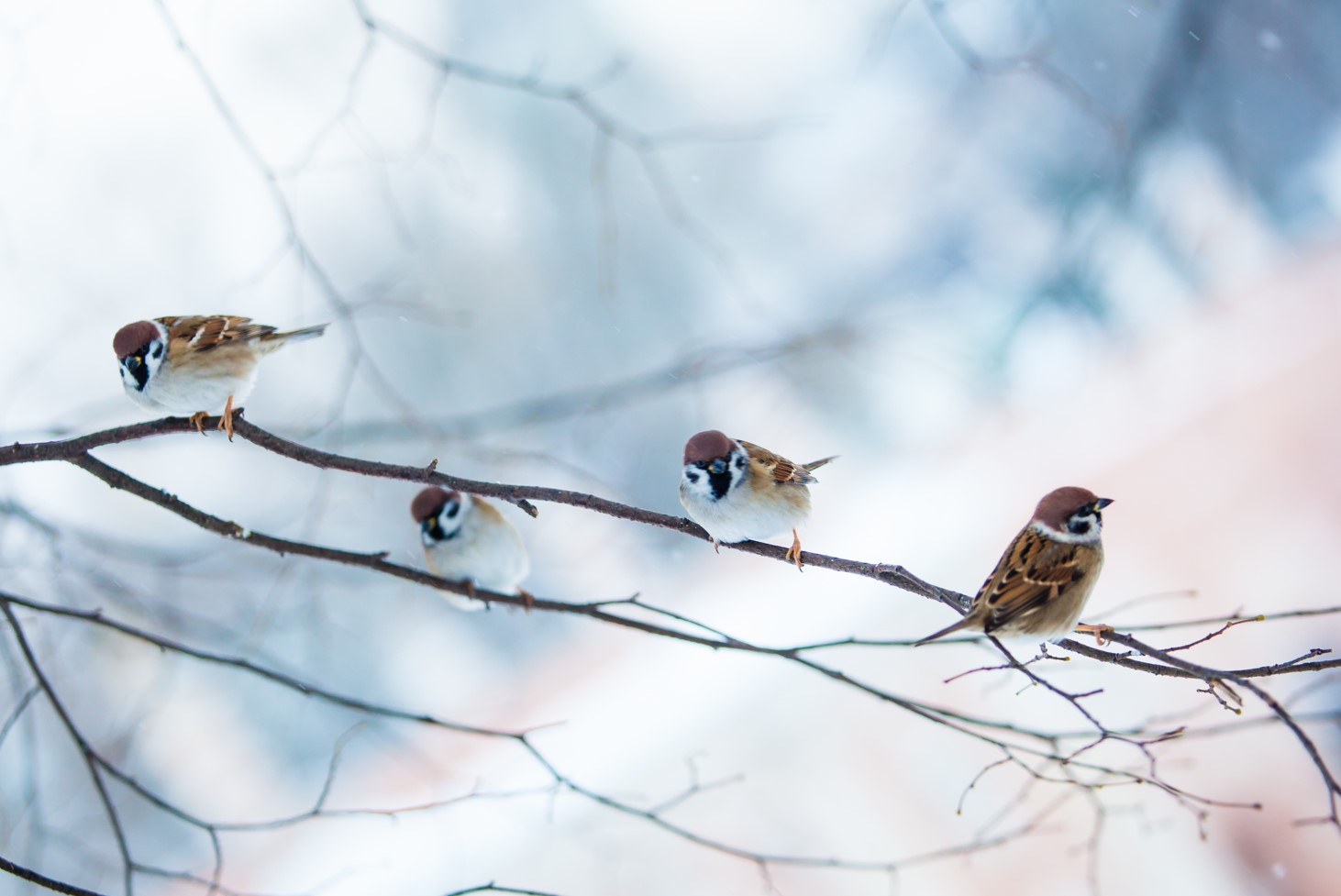
Birdwatching is a fascinating and rewarding hobby that allows you to observe and appreciate the diverse and beautiful world of birds. Whether you’re a beginner or an experienced birder, here’s a guide to help you spot feathered friends in the wild:
1. Get the Right Equipment:
– Binoculars: Invest in a good pair of binoculars to get a closer view of birds without disturbing them.
– Field Guide: Carry a field guide or use a bird identification app on your smartphone to help you identify different bird species.
– Notebook and Pen: Keep a birdwatching journal to record your observations, including the species you’ve seen, their behavior, and any interesting details.
2. Choose the Right Time and Location:
– Birds are most active during early morning and late afternoon, so plan your birdwatching outings during these times.
– Look for diverse habitats such as forests, wetlands, grasslands, and coastal areas, as different birds prefer different environments.
3. Learn Birdwatching Ethics:
– Respect wildlife and their habitats. Do not disturb nesting birds or get too close to them.
– Stay on designated paths and trails to avoid damaging sensitive ecosystems.
– Avoid making loud noises or sudden movements that could frighten the birds.
4. Observe and Identify Birds:
– Start by observing common bird species in your area to build your identification skills.
– Pay attention to the size, shape, color, and markings of the birds, along with their behavior and calls, to help with identification.
– Take note of the habitat in which you find the birds, as it can provide additional clues for identification.
5. Join Birdwatching Groups:
– Consider joining local birdwatching clubs or online forums where experienced birders can share their knowledge and offer guidance.
– Group outings can be a great way to learn from others and discover new birding spots.
6. Practice Patience:
– Birdwatching requires patience and time. Sometimes, you may need to wait quietly in one spot to spot a particular bird.
– Be prepared for the unexpected; you may come across rare or migratory birds during your outings.
7. Keep Learning:
– Birdwatching is an ongoing learning experience. Continuously expand your knowledge about different bird species, their behaviors, and habitats.
– Attend birdwatching workshops, read books, and follow online resources to enhance your birdwatching skills.
8. Capture Photos and Memories:
– Bring a camera or a smartphone with a good zoom lens to capture photos of the birds you spot.
– Take the time to observe and enjoy the birds without being solely focused on photography.
Remember, birdwatching is about enjoying the beauty of nature and appreciating the incredible diversity of avian life. Have fun and happy birdwatching!

1. Research Local Birding Hotspots: Look for popular birdwatching locations in your area through online forums, birding websites, or local birdwatching groups.
2. Visit National Parks and Wildlife Reserves: These protected areas often provide a diverse range of bird species. For example, visit Yellowstone National Park in the United States to spot bald eagles, ospreys, and various waterfowl.
3. Explore Wetlands and Marshes: Wetlands attract a wide variety of birds, such as herons, egrets, and ducks. Head to the Everglades in Florida, USA, to see an array of bird species.
4. Check Migration Routes: Research migration routes, and be at the right place during the right season. For instance, visit Point Pelee National Park in Canada during spring for witnessing the songbird migration.
5. Lakes and Ponds: Bodies of water are a magnet for birds. Examples include Lake Nakuru in Kenya, famous for its flamingo flocks.
6. Woodlands and Forests: Explore different types of forests; for instance, the Amazon Rainforest is home to a vast array of bird species, including toucans and parrots.
7. Coastal Areas and Beaches: Seashores provide excellent opportunities to see seabirds like gulls, terns, and pelicans. Visit the Galapagos Islands for diverse seabird populations.
8. Follow Birdwatching Apps: Utilize apps like eBird or iBird to find recent bird sightings and track species in your area.
9. Attend Birdwatching Events: Join local birdwatching outings and festivals to learn from experienced birders and discover new locations.
10. Join Birdwatching Groups: Participate in local birdwatching groups or online communities to get tips from fellow enthusiasts.
11. Ask Local Experts: Talk to park rangers, naturalists, or experienced birders in the area for insider information on the best spots.
12. Search for Birding Blogs: Many birdwatchers share their experiences and discoveries through blogs, offering valuable insights on locations.
13. Look for eBird Hotspots: Use eBird’s online platform to find hotspots where many birders report sightings.
14. Explore Different Habitats: Visit various habitats, such as grasslands, deserts, and mountains, for a diverse birdwatching experience.
15. Scout During Different Times: Birds can be more active during specific times of the day. Try early mornings or late afternoons for better chances of spotting birds.
16. Check Weather Conditions: Birds may be more active before or after a storm, so consider checking the weather forecast before heading out.
17. Stay Quiet and Patient: Birds are easily spooked by loud noises. Stay calm and patient to observe them in their natural behaviors.
18. Use Binoculars and Spotting Scopes: Invest in quality optics to get a closer look at distant birds without disturbing them.
19. Practice Ethical Birdwatching: Respect the birds’ space and habitat. Avoid getting too close or disturbing nesting sites.
20. Record Bird Songs: Learning bird calls and songs can help you locate and identify birds even when they are hidden from view.
21. Consider Bird Photography Blinds: Using photography blinds can help you get closer to birds without alarming them.
22. Explore Private Nature Reserves: Some privately-owned reserves offer exclusive birdwatching opportunities.
23. Talk to Local Photographers: Photographers often know great birdwatching spots, as they seek ideal locations for capturing stunning shots.
24. Learn About Bird Behavior: Understanding bird behavior can help you predict their locations and activities.
25. Follow Birdwatching Trail Maps: Many birdwatching locations have marked trails designed to guide visitors to prime birdwatching areas.
26. Search for Nectar Feeders and Birdhouses: Some parks or gardens may have feeding stations and birdhouses that attract various bird species.

27. Utilize Social Media: Join birdwatching groups on social media platforms to stay updated on bird sightings in real-time.
28. Be Prepared for All Seasons: Different bird species are present during different seasons. Prepare for seasonal changes.
29. Document and Share Your Observations: Contribute to citizen science efforts by recording your sightings on platforms like eBird.
30. Experiment and Explore: Don’t be afraid to venture into new locations and try different strategies to discover unique birdwatching spots.
Related Posts
Guide to Taking Care of Smooth and Curly HairHaving a combination of smooth and curly hair can be a blessing and a challenge. Each hair type requires different care and attention to maintain its health and beauty. In this comprehensive guide, we'll explore the essential tips and techniques to care for both smooth and curly hair, helping you embrace the unique beauty of your locks and keep them looking fabulous. 1. Know Your Hair Type Understanding your hair type is the first step in developing an effective hair care routine. Identify the areas where your hair is smooth and where it becomes curly or wavy. This knowledge will help you tailor your care to each section appropriately. 2. Use a Suitable Shampoo and Conditioner Invest in a shampoo and conditioner designed for your hair type. For smooth sections, look for products that promote shine and hydration without weighing the hair down. For curly areas, opt for moisturizing and…
Crafting Timeless Elegance: A Guide to Choosing Handmade JewelryHandmade jewelry exudes a unique charm and allure that sets it apart from mass-produced pieces. Each handcrafted item carries the artisan's passion, creativity, and dedication, making it a special and meaningful addition to your collection. However, selecting the perfect handmade jewelry piece can be an enriching yet overwhelming experience. In this article, we'll guide you through the process of choosing handmade jewelry that complements your style and captures the essence of craftsmanship. 1. Discover Your Personal Style Before embarking on your quest for the perfect handmade jewelry, take a moment to understand your personal style. Are you drawn to minimalistic designs, bohemian aesthetics, or vintage-inspired pieces? Knowing your style preferences will help narrow down your choices and make the selection process more enjoyable. 2. Seek Quality Craftsmanship Handmade jewelry is a testament to the artisan's skill and artistry. When choosing a piece, look for exceptional craftsmanship that showcases attention to…
Video Making 101: A Beginner's Guide to Getting StartedVideo making can be a fun and rewarding creative pursuit. Whether you want to make videos for personal enjoyment, social media, or even a potential career, this beginner's guide will help you get started on the right foot. Let's break it down into steps: 1. Define Your Purpose: - Decide what type of videos you want to create (e.g., vlogs, tutorials, travel videos, storytelling, etc.). - Determine your target audience and what message you want to convey. 2. Plan Your Content: - Outline the structure of your video, including the introduction, main content, and conclusion. - Create a script or a rough outline to guide your filming and ensure you cover all important points. 3. Choose Your Equipment: - Smartphones: For basic videos, modern smartphones can work well with their built-in cameras. - Cameras: If you want higher quality, consider a DSLR, mirrorless camera, or camcorder. - Audio: Invest in…
The Ultimate Guide to Weight Loss: Tips and StrategiesLosing weight requires a combination of healthy eating habits, regular physical activity, and lifestyle adjustments. Here's a comprehensive guide with tips and strategies to help you achieve your weight loss goals: 1. Set Realistic Goals: Establish achievable and measurable weight loss goals. Aim for steady progress rather than quick fixes, as sustainable weight loss is a gradual process. 2. Consult a Healthcare Professional: Before starting any weight loss program, consult your doctor or a registered dietitian to ensure your plan is safe and appropriate for your individual needs. 3. Create a Calorie Deficit: Weight loss occurs when you burn more calories than you consume. Calculate your daily caloric needs and aim to eat fewer calories than your body burns. 4. Balanced Diet: Focus on a balanced diet that includes a variety of nutrient-dense foods such as fruits, vegetables, whole grains, lean proteins, and healthy fats. 5. Portion Control: Be mindful…
Stepping in Style: A Guide to Selecting Chic Boots for WomenBoots are a timeless and versatile footwear choice that can instantly elevate any outfit, adding a touch of sophistication and style. From classic ankle boots to knee-high stunners, there's a boot style to suit every woman's taste and personality. In this guide, we'll walk you through the key factors to consider when selecting stylish boots for women, ensuring you step out in fashion-forward footwear that makes a statement. 1. Know Your Style Preferences Before diving into the world of boots, consider your style preferences. Are you drawn to classic and timeless designs, or do you prefer trendy and bold styles? Understanding your style preferences will help you narrow down your options. 2. Choose the Right Boot Height Boots come in various heights, including ankle, calf, knee-high, and over-the-knee. Select a height that complements your body type and the outfits you plan to wear with them. 3. Consider Your Comfort Level…
Step-by-Step Guide to Achieving Your Fitness GoalsSetting fitness goals is a powerful step towards transforming your health and well-being. Whether you aspire to lose weight, build strength, run a marathon, or simply lead a more active lifestyle, having a clear vision and a well-defined plan is essential for success. In this comprehensive guide, we'll walk you through the key steps to help you achieve your fitness goals and unlock the best version of yourself. 1. Set Specific Goals: Define your fitness objectives with clarity. Whether it's running a certain distance, lifting a specific weight, or improving your endurance, setting specific goals provides focus and direction. 2. Make Your Goals Realistic: While it's great to aim high, ensure that your goals are attainable within a reasonable timeframe. Unrealistic targets can lead to disappointment and demotivation. 3. Break Down Your Goals: Divide your long-term goals into smaller, manageable milestones. Celebrating these small victories will keep you motivated and…
Choosing the Best Lawyer for Your Legal Needs: A Comprehensive GuideWhen facing legal issues, finding the right lawyer is crucial to ensure the best possible outcome for your case. However, with so many lawyers practicing in various areas of law, selecting the best one for your specific needs can be a daunting task. In this article, we'll provide a comprehensive guide on how to choose the best lawyer to represent you effectively and professionally. 1. Determine Your Legal Needs Before searching for a lawyer, identify your specific legal needs. Different lawyers specialize in various areas of law, such as family law, personal injury, criminal defense, business law, or estate planning. Knowing the type of legal assistance you require will help you narrow down your search. 2. Research and Referrals Start by conducting thorough research on lawyers in your area who specialize in the relevant field of law. Read reviews, check their qualifications, and assess their experience. Additionally, seek referrals from…
Becoming a Software Developer: Your Guide to a Rewarding Career in TechnologySoftware development is an exciting and dynamic field with endless opportunities for creativity and problem-solving. Whether you're a recent graduate or considering a career change, here's a comprehensive guide on how to become a software developer and embark on a fulfilling journey in the world of technology. 1. Set Your Goals and Expectations: Understand what motivates you to become a software developer. Identify your goals, whether it's building applications, web development, game development, or working in a specific industry. Having clear objectives will guide your learning and career choices. 2. Choose a Programming Language: Software developers work with various programming languages, such as Python, Java, JavaScript, C++, or Ruby. Start by picking one language to begin your learning journey. Each language has its unique strengths and applications, so research and choose one that aligns with your goals. 3. Get Educated and Learn the Basics: You don't necessarily need a formal…
How to Choose an Elegant Blouse: A Guide to Timeless StyleAn elegant blouse is a versatile and essential addition to any woman's wardrobe. Whether dressing up for a special occasion or aiming for a chic, sophisticated look in your everyday attire, a well-chosen blouse can elevate your style and make a lasting impression. However, with so many options available, selecting the perfect elegant blouse can be a daunting task. In this guide, we'll walk you through the key considerations and tips to help you choose an elegant blouse that exudes timeless style and enhances your overall look. 1. Fabric Matters: The first step in choosing an elegant blouse is to focus on the fabric. Opt for high-quality materials like silk, chiffon, satin, or fine cotton, as they drape beautifully and lend an air of luxury to your outfit. These fabrics also have a natural sheen that adds an elegant touch to any ensemble. Avoid cheap, synthetic materials, as they tend…
Mapping Your Path: A Guide to Planning a Successful Business CareerEmbarking on a business career can be an exciting and rewarding journey filled with opportunities for growth and achievement. However, like any journey, careful planning and preparation are essential to ensure success. Whether you're just starting out or looking to advance your current career, having a well-thought-out plan can pave the way for a fulfilling and prosperous business career. In this guide, we'll walk you through the key steps to plan a successful business career that aligns with your goals and aspirations. 1. Self-Assessment and Goal Setting Before diving into the world of business, take the time for self-assessment. Reflect on your strengths, interests, and values to identify the areas of business that align with your skills and passions. Set clear and achievable short-term and long-term career goals to guide your journey. 2. Education and Skill Development Invest in your education and skill development. Consider pursuing a relevant degree in…



